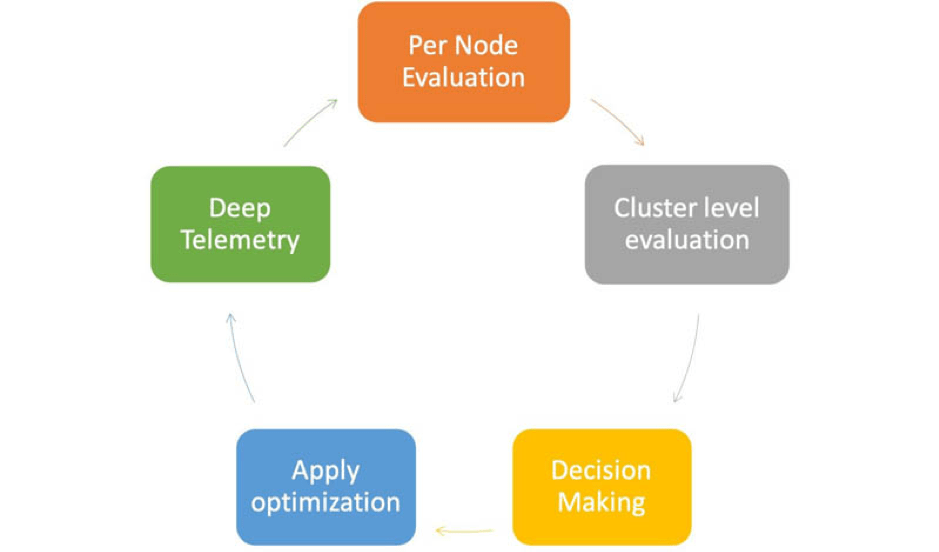The feature of Auto-Tune in Elasticsearch Service by Amazon, a control system with a closed-loop that conforms the Elasticsearch cluster to the workload in progress, was recently unveiled by Amazon. Workloads for log analytics ingestion throughput are provided and search query tail latencies are lowered, due to the recent automatic memory management. Master Elasticsearch with this online Elasticsearch training course that enables you to learn how to manage and deploy Elasticsearch clusters.
The Amazon ES analyzes usage metrics and performance through the Cluster of Elasticsearch for recommending modifications to the JVM configurations on nodes in order to improve stability and cluster speed. Auto-Tune could raise or reduce the following resources in the cluster based on the domain’s performance metrics, depending on the workloads of an application: request cache for shards, the cache of field data, searching and writing queues for thread pools, clear cache, heap sizing in JVM, and Sizing of the JVM generation.

The importance of adaptive resource management is explained in the Blog on Amazon Web Services Big Data article: “Elasticsearch is used in a wide range of applications, including relevance ranking and curated search, Stores of time-series data, incident response (Security Information and Event Management), log analytics, and telemetry metrics. These usage studies differ in terms of scaling and performance, and they make various uses of Elasticsearch capabilities. Although best practices and heuristics are a wonderful place to start, there was no one-size-fits-all solution. Tuning your setup to the individual cluster requirements has major stability and performance consequences, especially with continually evolving workloads. Elasticsearch, on the other hand, has a number of options that are extremely intertwined and can be tough to modify manually. This is addressed by Amazon Elasticsearch Service Auto-Tuning”.
Changes that are nondisruptive which Auto-Tune applies while the cluster is running and changes that require deployment in blue/green are the two types of changes Auto-Tune can make. If Auto-Tune is turned on without a window for maintenance, it merely makes non-disruptive modifications that yield minor performance gains over time while avoiding a blue/green deployment’s overhead. Ankit Malpani, an AWS senior software engineer, says: “ Self-driving databases and auto-tuning are the new standards, and this was a wonderful first step in bringing #elasticsearch there”.
On new domains, the new feature is turned on by default, but command lines may be used to turn off or the terminal. Amazon advises utilizing the dashboard to enable Auto-Tune over the existing domains.
Performance Analyzer, which is an open-source service and uncovers a REST API that enables querying copious cluster performance metrics, including metric aggregations, independent of the JVM, is one of the foundations of the new service. For viewing those metrics, PerfTop is a default CLI.
Alolita Sharma, AWS’s principal technologist, tweets: ”I’m delighted to see the #OpenDistroforElasticsearch PerformanceAnalyzer, which has been in development for years, powering a new Amazon ES – AutoTune feature”.
In recent months, the relationship between the AWS, Elasticsearch, and open-source community has been contentious, a topic discussed in depth by InfoQ in a distinct article.
On domains with an instance type supported and Elasticsearch 6.7 or later, Auto-Tune is open.
Amazon Elasticsearch Service Auto-Tune
Amazon ES Auto-Tune uses performance and uses information from your Elasticsearch cluster to propose memory-related configuration adjustments on your nodes, such as queue and cache sizes and Java virtual machine (JVM) settings. These optional changes boost cluster performance and stability.
Some changes take effect right away, while others require you to set aside time for maintenance. At any moment, you can restore to the default Amazon ES settings.
You may see Auto-recommendations Tune’s in the Amazon ES interface on the Notifications page as it collects and analyses performance metrics for your domain.
On domains running Elasticsearch 6.7 or later with a supported instance type, Auto-Tune is available in commercial Regions.
Changes and their types
There are two types of changes in Auto-Tune:
- Performs non-disruptive changes as the cluster operates.
- Changes that necessitate the use of a blue/green deployment.
Auto-Tune can recommend changes to the following parameters based on the performance data of your domain:
Depending on the performance data of your domain, Auto-Tune can suggest modifications to the following parameters:
- Type of Change: JVM heap size
Category: Blue/green
Description: Amazon ES allocates 50% of an instance’s RAM to the JVM heap by default, up to a heap size of 32 GiB. By increasing this percentage, Elasticsearch gets more memory, while the operating system and other processes get less. Larger values decrease the number of trash collection pauses while also increasing the length of those pauses.
- Type of Change: JVM young generation settings
Category: Blue/green
Description: The frequency of small garbage collections is affected by JVM “young generation” settings. Major collections and pauses can be reduced by collecting minor things more frequently.
- Type of Change: Queue size
Category: Nondisruptive
Description: The size of the search queue is 1000 by default, and the size of the write queue is 10000. If more heap is available to accommodate requests, Auto-Tune dynamically scales the write and search queues.
- Type of Change: Cache size
Category: Nondisruptive
Description: Auto-Tune automatically scales the write and search queues if more heap is available to handle requests. To avoid out-of-memory and circuit issues, Auto-Tune scales the field data cache size.
The cache for shard requests is controlled at the node level, with a maximum size of 1% of the heap by default. The size of the shard request cache is scaled by Auto-Tune to accept more search and index requests than the default cluster could handle.
Conclusion:
In this article, we have discussed various aspects of Auto-Tune such as performance metrics for cluster resources, performance analyzer feature, and various types and changes in Auto-Tune for Amazon ES.

